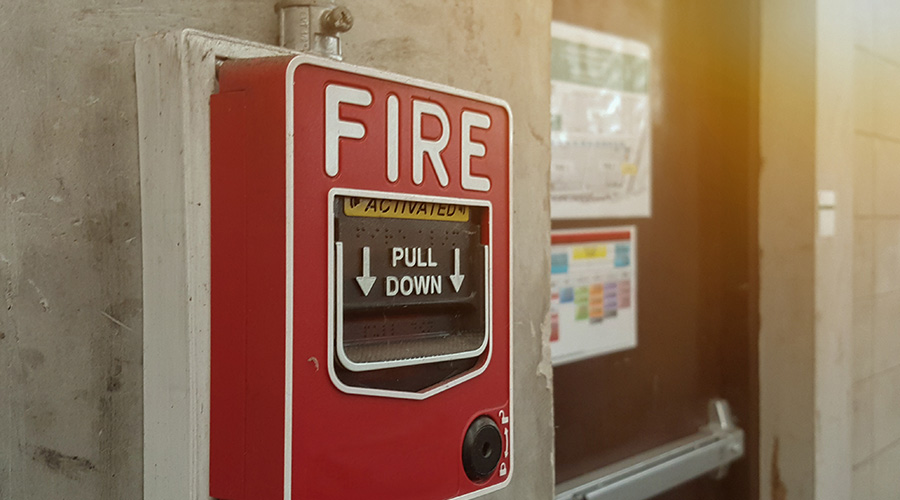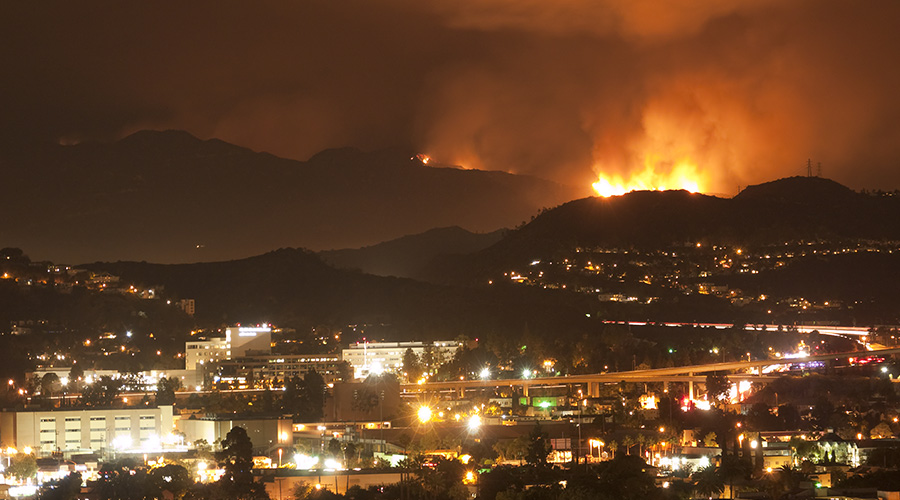Overlooked Measures Play Critical Role in Protecting Buildings From Fire
Each year in the United States about 3,000 people die, 17,000 are injured and $10 billion in property is damaged as a result of fire. In addition to these direct costs from fire, there are indirect costs, such as the cost of business interruption. For instance, the One Meridian Plaza high-rise fire in Philadelphia that occurred in 1991 resulted in the building never being re-opened. In 1988, the fire at the Interstate Bank Building in Los Angeles kept the building out of use for six months.
Because building fires can have dramatic impacts on the operations of a facility and the quality of life of its occupants, protecting a facility from fire should be high on every facility manager's radar screen. Facility managers are important stakeholders in the development and implementation of a building's fire protection program. As such, they play an essential role in ensuring their facilities are safe from fire.
When planning a facility's fire protection, there are many things for facility managers to keep in mind. But facility managers may not be aware of five important points in fire/life safety system planning. Paying attention to them can reduce risks to people and property.
 |
Understand the Occupants in Your Building |
Discussions about fire protection usually focus on active and passive fire protection systems. Although these systems play an essential role, it is also important to consider the factors that may influence the behaviors of people during building emergencies.
While human actions during fire emergencies are difficult to predict, there is a significant body of knowledge that addresses how humans behave when there is a fire in the building. Understanding these behaviors can help implement better fire protection programs.
For example, when there is a fire in a single-family home, the building occupants normally take action to investigate the problem and evacuate immediately. Conversely, if the emergency is in a public building, occupants usually do not take action but instead rely on the building staff for information about the emergency and evacuation instructions. Although 165 people died in the 1977 Beverly Hills Supper Club Fire in Southgate, Ky., many lives were saved when the wait staff assisted with the evacuation of the occupants.
Another factor that affects occupant response is how familiar they are with the building. During a fire emergency, infrequent users of a building are more likely to attempt to evacuate by the route they entered, as opposed to leaving by the shortest and fastest route. They will also ignore exit signs indicating the best route. Because people feel more comfortable with exiting by the familiar route, they will only change paths if the familiar route becomes impassable due to conditions such as smoke, fire or crowds.
Many people assume that occupants will panic during a fire emergency, crushing and fighting others in an attempt to evacuate a building. That happens regularly in movies and on television. Fortunately, there is little evidence that shows people will panic during an actual fire emergency. It is more likely that occupants will act rationally in relation to their understanding of the situation.
What occupant characteristics can affect the way a given building population will respond in a fire? Beyond the ones just mentioned, important characteristics can include: age; gender; level of alertness; physical and cognitive ability; building population and density; and the activity performed by occupants at the time of the emergency.
Understanding all of these human characteristics can be very helpful when developing and implementing a facility's emergency plan. Although occupant characteristics cannot be changed, effective emergency planning will increase the likelihood that building occupants will evacuate to a safe location when there is a building emergency. Accordingly, when planning for an emergency, every plan should focus on nullifying specific human characteristics that may hinder an effective building evacuation. For example, if a facility has occupants who aren't regular visitors to the building, the emergency plan should include the important role that staff has in assisting occupants who are not familiar with the building. Once this emergency plan is implemented, it is important that periodic drills be performed so that staff can become familiar with the plan.
Related Topics:















